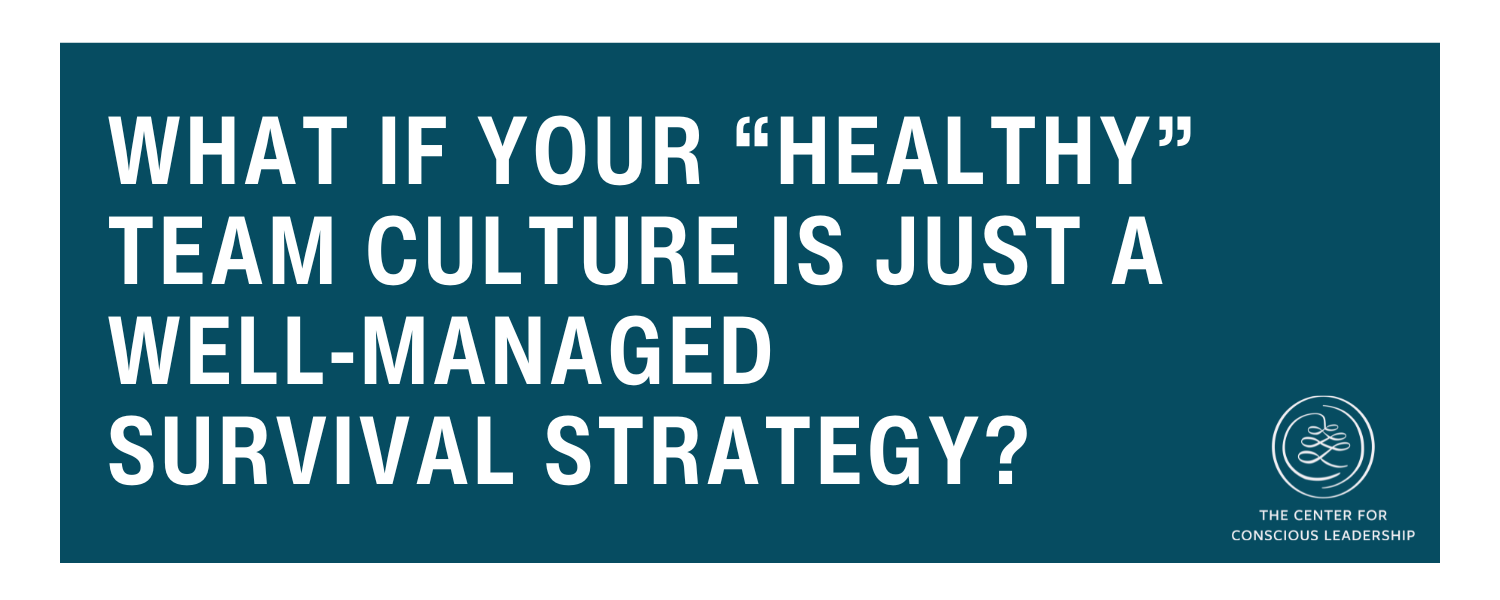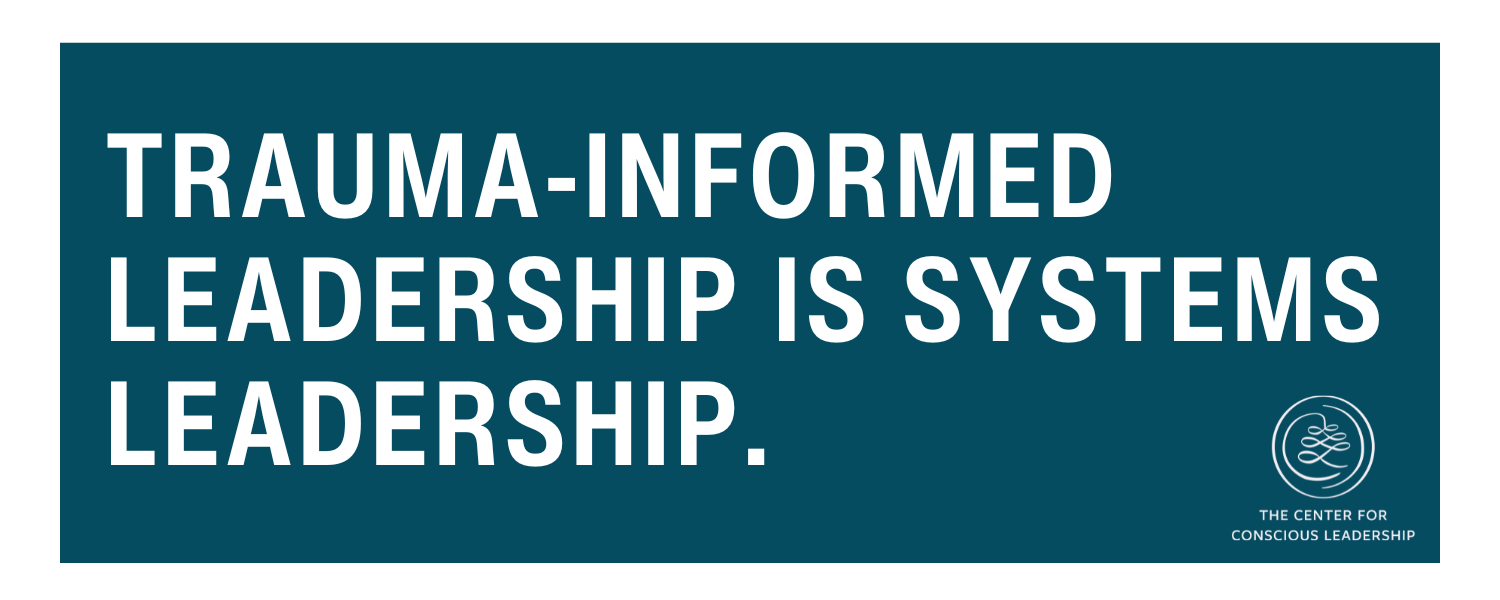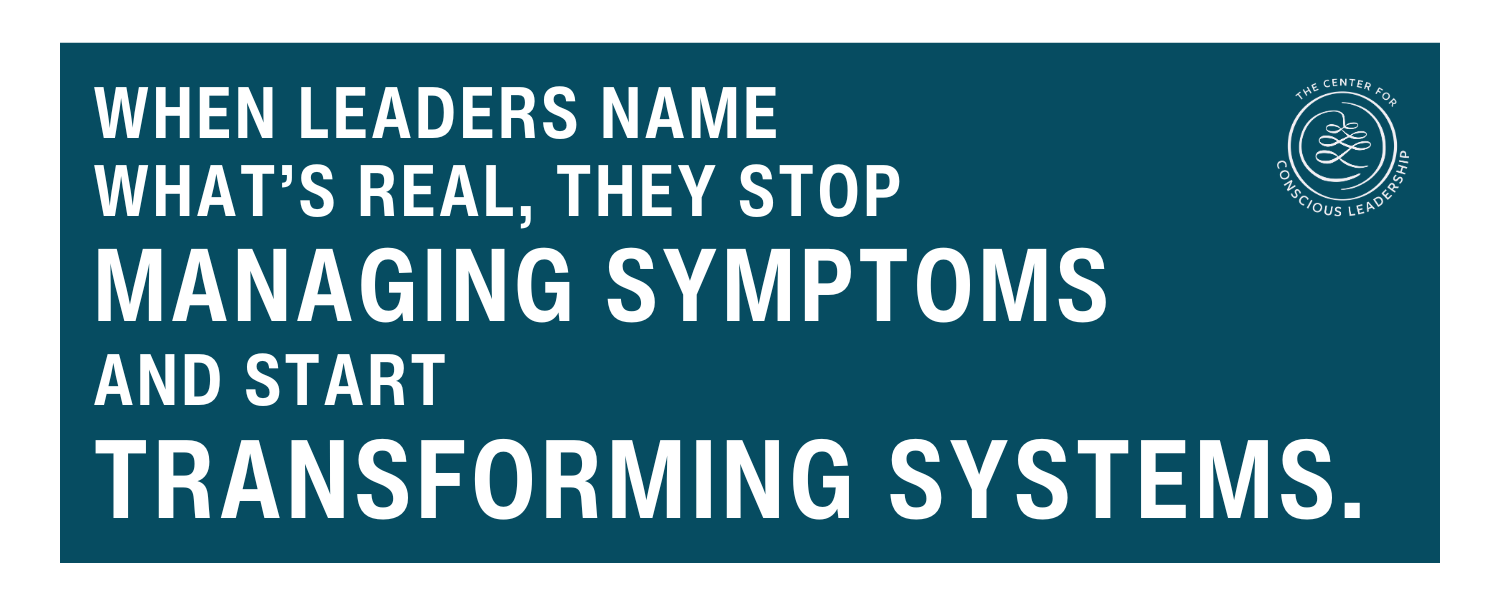Collective Protection Patterns: Decoding the Hidden Culture Code of Your Team
On paper, the team looked great.
They were collaborative, kind, and consistent. They were engaged, had low turnover rates, and great outcomes. Meetings ran smoothly. No raised voices, no visible conflict.
But beneath the surface, something felt… off.
When we sat with them, the first word that came up wasn’t conflict. It was exhaustion.
Everyone was so nice—so polite—that real conversations never happened. Decisions were made by default, not by collaborative design. Brilliant ideas died in silence. Team members swallowed disappointment and disapproval in the name of peace.
The leader, a thoughtful executive in a social impact organization, sensed it before she could name it. It was why she reached out to us in the first place. “We’re saying the right things,” she told us, “but something feels tight. Like everyone’s walking on eggshells.”
When she learned about Protection Patterns and how they show up in teams, everything clicked. Her team wasn’t being difficult, they were feeling disengaged and being distant in the name of self-protection. They were constantly bracing for impact, waiting for the other shoe to drop.
They were caught in a Collective Protection Constellation called Chronic Consensus, a system-level survival strategy that prioritizes harmony over honesty.
Once the leader could name it, everything changed.
Identifying the problem raises a liberating question for every leader: What if your “healthy” team culture is just a well-managed survival strategy?
When Teams Can’t Connect, They Protect
Collective protection is an issue of safety, not an issue of individual behavior.
When teams feel unsafe, whether due to instability, unclear leadership, perceived threats, or unspoken tension, they adapt. Those adaptations might look like urgency, silence, or surface-level positivity, but underneath, they’re the nervous system at work.
These are Collective Protection Constellations—group-level expressions of the same protection instincts we see in individuals.
Individual team members may have different protection patterns—Sam avoids conflict, Parvati withdraws into apathy, Su-Young micromanages—but together, they create a shared dynamic: Chronic Consensus. You might not notice Sam's silence or Su-Young's need for control in isolation, but when you step back, you see the constellation they form: a culture where real conversation never happens.
What starts as one person's nervous system response to perceived threat becomes, over time, "Just the way we do things around here."
Parvati is scolded for a mistake in an org-wide meeting. Sam and Su-Young take note and adjust their behaviors accordingly.
When safety is compromised in this way, a team's energy shifts from creation to protection. When it feels too dangerous to speak up, collaborate, and innovate, employees hide their true feelings, look for cues of belonging or exclusion, and preserve stability at all costs.
When left unnamed and unchanged, these behaviors become ingrained as culture.
That’s why trauma-informed leadership is systems leadership.
If you’re trying to transform culture without understanding how protection operates, you’re reinforcing the very thing you’re trying to change. You’ll invest in communication training, restructure roles, maybe even reshuffle people, all while the underlying nervous system of the team stays in protection mode and the issue persists.
As one executive told us, “We kept trying to fix behavior when what we needed to fix was safety.”
Trauma-informed leaders don’t just manage people, they steward safe environments. By recognizing and resolving Protection Constellations, leaders release teams from their fear-based reactionary responses and realign them with purpose, trust, and shared goals, reigniting creative, collaborative momentum.
How Protection Becomes Culture
At the individual level, protection patterns show up as over- or under-functioning, defensiveness, people-pleasing, or avoidance. At the collective level, those same patterns multiply, interact, and reinforce one another. These behaviors become shared survival strategy constellations—predictable, repeating patterns that define how a group moves.
Nervous system states are contagious. Through mirror neurons and social signaling, our bodies are constantly broadcasting and responding to cues of safety or danger. When enough people in a group are dysregulated—anxious, afraid, shut down—the group’s relational field becomes reactive, tight, or cautious. When enough people are regulated and grounded, safety expands.
The relational field is the emotional and somatic interconnectedness we navigate constantly, whether we are weaving through a crowded space, silently negotiating who leaves the elevator first, or sensing tension in a room. It's the stage where Collective Protection Constellations emerge: patterns we recognize as a whole, even when we can't name each individual behavior that creates them.
Here are some of the most common Collective Protection Constellations we see in executive teams, non-profits, and organizations navigating high change or instability:
Chronic Consensus: Fake agreement and high levels of avoidance. Hard conversations are replaced with polite silence or vague dismissal.
Nonprofit Nice: Harmony at the expense of honesty. Feelings are managed, not expressed, and hidden under a veil of “positivity.”
Shadow Urgency: Burnout disguised as high performance. Constant motion to avoid discomfort. It exemplifies the phrase, “Just keep swimming…” at the expense of everything else.
Performative Inclusion: The optics of care without power redistribution or equitable practices. We’re talking the talk, but not walking the walk.
Fear of Feedback: Psychological safety is low, even when “open door” policies exist. The vulnerability of receiving feedback, and potentially feeling rejected, is too much for teams to bear.
Emotional Containment: “Professionalism” as suppression. Emotion is seen as a weakness.
Facade of Harmony: Everything looks fine. It isn’t. Teams spend their energy managing how things look instead of how things function. A closer look reveals the chaos underneath.
Each of these constellations arises from the same root condition: a lack of safety.
They are intelligent adaptations to unsafe or unstable systems. They make perfect sense in context. But over time, they restrict our ability to communicate authentically and participate dynamically in our organizations.
When we don’t name them, they calcify into culture.
When we do name them, we interrupt the cycle, bringing conscious attention to them and creating space for reflection, repair, and recalibration.
Introducing the Collective Protection Patterns Map
The Collective Protection Patterns Map helps leaders see their culture through a new lens. It builds on the Protection Patterns Map for Individuals by scaling it up—from personal to systemic.
Instead of trying to correct individual behavior, conscious leaders ask, “What’s happening in this system that’s making protection necessary?”
Transformation begins when we stop managing reactions and start redesigning the conditions that cause them.
Here’s how to use the map in practice:
Step 1: Map the Protection Patterns on Your Team
Start by observing behavior with curiosity instead of judgment.
Ask:
What are people protecting?
What feels unsafe to express here?
Where does energy contract or disappear?
What conversations aren’t happening?
Look at your systems and signals—policies, language, unspoken rules. Do they promote safety or self-protection? Where can you increase psychological safety and encourage openness and honesty?
When you begin to see patterns, you can go from managing personalities to truly leading your team. It frees everyone from our inherited cultural norms of what it means to “be professional” and curates a company culture that truly reflects your values and priorities. Your teams can work well and live well without fear.
Step 2: Name the Constellation
Once you see the pattern, name it.
When we leave issues unaddressed, they are normalized, blending into the background of our shared experience.
Naming a problem liberates. It reduces shame, increases agency, and gives everyone shared language for what’s hiding in plain sight.
When you say, “I’m noticing Chronic Consensus,” or “We’ve slipped into Shadow Urgency,” you’re naming a shared reality, revealing collective dynamics, not pointing fingers. It makes the invisible visible, and invites the team to observe the pattern together, sharing what they’ve noticed, and taking collective responsibility for shifting the dynamic. It signals, “This isn’t an individual failure—this is a dynamic we’re all caught in, and we can change it together.”
Being open about our struggles helps us to connect, and know that our experiences matter. Taking collective responsibility for patterns and conditions that cause them acknowledges our agency and self-efficacy. Collaborative solutions transform isolation into connection, shame into shared understanding, and blame into problem-solving.
With this awareness, teams can build cultures and systems rooted in honesty and connection, rather than comfort and self-protection.
Step 3: Choose Trauma-Informed Leadership Moves
Once the constellation is visible, the work becomes clear: Collaborate to shift the environment so that connection becomes possible again. Rather than correcting individual behavior, the charge is to address the conditions that make protection necessary in the first place.
That might mean:
Slowing down decision cycles so the team has room to breathe;
Creating rituals for collective repair after conflict, not just moving on;
Naming power dynamics openly so everyone understands the stakes;
Modeling emotional honesty from the top so vulnerability becomes safe; and
Replacing "niceness" with courageous kindness that allows for truth-telling.
When leaders work with their teams to create these shifts, teams move from fear to courage, from urgency to sustainable pacing, and from perfectionism to shared learning. Your regulated presence becomes a stabilizing force, and connection, interdependence, and collaboration becomes your company culture.
What Happens When Leaders Name Protection Patterns
Let’s return to our nonprofit. After identifying that they were in Chronic Consensus, the nonprofit leadership team began to experiment. They started their weekly meetings differently, beginning with a grounding pause and an honest check-in. They began asking, “What’s not being said right now?” and actually listened to the answer.
At first, such naked honesty felt awkward. Voices shook. But as the leaders held steady, acknowledging tension instead of avoiding it, the entire system started to relax. Soon, people were naming the elephants in the room without fear, communicating their boundaries clearly, and making decisions quickly and with conviction. Feedback was normalized—and valued.
Something unexpected happened: the team didn’t collapse under the weight of all that honesty. So much effort was spent preventing this exact scenario—terrifying, raw honesty—but they found relief, trust, and expansion on the other side. They were aligned, both with each other and with their values. The regulating presence of their leaders rippled through the team and even to other teams, cultivating a larger system of nervous system safety.
When teams can name what they're protecting against, hold the tensions and discomfort together, and co-create solutions from that honest place, protection becomes unnecessary. Connection becomes possible. That's when real transformation begins.
Collective Patterns Create Cultures
What we call culture is often the visible behaviors created by our invisible, collective nervous systems. What we call “dysfunction” is often just a sign of fear.
The invitation of the Collective Protection Patterns Map is to recognize the team as an ecosystem where individual nervous systems create a shared relational field, and to recognize culture as the resulting effects of those systems. When leaders learn to map the constellation, name what’s real, and intervene with compassion, they stop managing symptoms and start transforming systems.
That’s the essence of trauma-informed leadership: creating conditions where people feel safe enough to heal their own protection patterns. In essence, we take care of the system so the Protection Constellations resolve themselves. Safe leaders create safe environments that become thriving, expanding organizations that are both regenerative and self-sustaining.
The Bottom Line
If your team looks good on paper but feels off in practice, pause before reaching for another performance solution. Instead, ask: What if this isn’t resistance? What if it’s protection? What if what looks like dysfunction is actually a nervous system doing its best to stay safe?
When you name the pattern, you interrupt its power.
When you create safety, people no longer need protection. That’s when real connection—and real collaboration—begin.
If you're ready to create the safety that makes real collaboration possible, we can help. Book a discovery call or explore our Trauma-Informed Leadership Program to learn how to lead teams that connect instead of protect.







